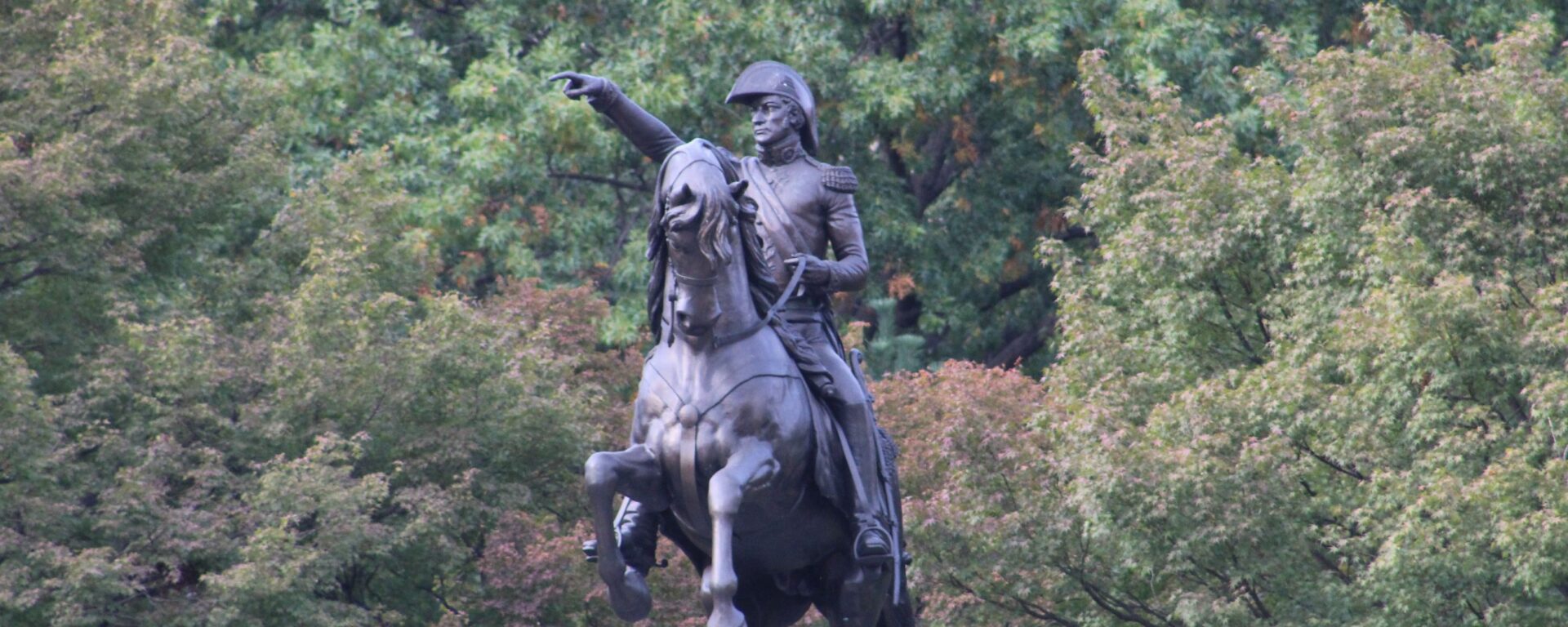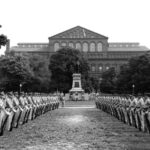“Let us be free, the rest matters not.”
In the corner of the intersection of Virginia Ave. and 20th St. stands the equestrian statue of one of South America’s greatest leaders. In between the Office of Personnel Management and the State Department, the statue sees thousands pass by it daily, but the legacy of General José de San Martín has been largely forgotten in North America.

The statue of San Martín stands at the southern tip of Triangle Park in Foggy Bottom. The horse rears on its hind legs while San Martín, in military uniform, holds the reins in his left hand and points into the distance with his right hand. The statue is a copy of the one that stands in Plaza San Martín in Buenos Aires, Argentina. The original was sculpted by French sculptor Augustin-Alexandre Dumont in 1862.

San Martín’s statue originally stood in Judiciary Square in front of the National Building Museum. It was dedicated in October 1925 in a ceremony presided over by President Calvin Coolidge and Argentinian ambassador Honorio Pueyrredón. The statue was moved to its present location in the 1970s when the Judiciary Square Metro stop was being constructed.
San Martín is counted among the great liberators of the Americas. Although he was not directly responsible for the independence of Argentina (for which he often receives credit) he did lead an army that successfully liberated Chile and Peru from Spanish rule and is considered a hero throughout the continent.
Born in what would become Argentina, he was raised in Europe where his military career began in the service of Spain at only 11 years old. He fought against the Moors, Portugal, Britain, and France, and served in infantry, cavalry, and naval units before he resigned his commission and returned to Argentina in 1812 to assist in their fight for independence from Spain.

His greatest military accomplishment was leading an army across the Andes mountain range – a feat comparable to Hannibal or Napoleon crossing the Alps. He had split his army into six units for the crossing, which was so well coordinated that they all completed the crossing at virtually the same time and successfully captured Santiago, Chile, less than a month after they set out. After the liberation of Chile, San Martín moved north to liberate Peru, after which he was named the first president of that country.
One of the most remarkable things about San Martín is his lack of political ambition. After liberating the southern half of South America, he retired to a quiet life in Europe with his daughter. He peacefully resigned the presidency of Peru and had earlier declined the presidency of Chile and Argentina. Few military leaders in history have put aside their power after conquest in favor of democratic ideals. It is this aspect of his character that has earned him a monument in D.C. and countries as far-flung as the Philippines and France.

Resources used for this article:
https://en.wikipedia.org/wiki/General_Jose_de_San_Martin_Memorial
https://en.wikipedia.org/wiki/Jos%C3%A9_de_San_Mart%C3%ADn
https://en.wikipedia.org/wiki/Augustin-Alexandre_Dumont

